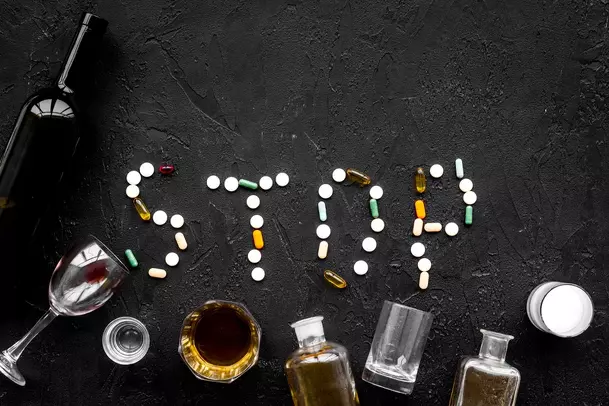Sober living
How Fast Do You Lose Tolerance To Alcohol When You Stop Drinking?

This is common in the case of Hodgkin’s Lymphoma, where those with this condition will feel pain after drinking.4 This is due to enlargement of the lymph nodes, resulting in swelling and pressure placed on the nerves. Alternatively, people may experience sensitivity to certain components of alcoholic drinks.2 This can mean reactions to preservatives such as sulfites, chemicals, grains, or histamines (a byproduct of fermentation). In this case, individuals may still be able to enjoy some forms of alcohol that don’t contain the specific ingredient they are reacting to.
- Addiction involves a powerful psychological component that drives individuals to continue using substances or engaging in behaviors despite the detrimental effects on their health, relationships, and daily life.
- This response causes red blotches to appear on the skin or face and back, and sometimes the whole body due to the accumulation of acetaldehyde that cannot be metabolized.
- Dr. Schwartz goes on to explain that as we age, muscle is replaced by fat and fat cells hold less water than muscle cells, largely diminishing the positive effect that muscles can have on the processing of alcohol.
- Functional alcohol tolerance is often the reason for accidents on the road or at the workplace.
- The danger of alcohol tolerance is that your blood alcohol content level continues to rise and increase the dangers of overdose, even if you don’t feel the effects of alcohol.
You deserve excellent care and a rewarding life in recovery.

Some people can tolerate cocktails easily, but get drunk off just a couple of glasses of wine. Rodents are trained to walk while the rod rotates at a fixed or accelerating speed. The rotations per minute and time at which the animal falls from the rod are recorded. Treatments that disrupt motor coordination, such as alcohol, cause the animal to fall from the rod sooner and at a lower revolution building alcohol tolerance speed. Alcohol dose-dependently produced hypothermia in mice, an effect that decreased, regardless of dose, when the mice were tested with the same doses on day 2. “Because I could handle my drinking — or so I thought — and could consume a lot of alcohol without becoming uncontrollably inebriated, I refused to see it as a problem.” Buzz Aldrin (lunar module pilot on the 1969 Apollo 11 mission).
Physical Health
Acutely, a higher dose of alcohol causes a greater hypothermic effect, but the same magnitude of rapid tolerance is observed (Figure 3). This effect was evident when the time between exposures was 24 h but not 48 or 72 h. These findings suggest that, under these conditions, rapid tolerance to hypothermia develops, regardless of the alcohol dose, but only when the second exposure to alcohol occurs within 24 h of the first alcohol exposure. Simply defined, alcohol tolerance occurs when the amount of alcohol that is consumed does not change but results in less of an effect or when higher amounts of alcohol are needed to produce the same effect. Tolerance has been included in the clinical assessment of AUD since the 3rd edition of the DSM (American Psychiatric Association, 1980).

More in Improve your health
Male rats were pretreated with systemic or intra-nucleus accumbens (NAc) injections of naltrexone or vehicle, followed alcohol or saline administration 30 min later. The rats that received either systemic or intra-NAc (core or shell) injections of naltrexone did not develop rapid tolerance in the tilt-plane test. Naloxonazine, a potent and irreversible μ-opioid receptor antagonist, was administered in the core and shell of the NAc and also blocked the development of rapid tolerance in the tilt-plane test (Varaschin and Morato, 2009). There are several reasons why the construct of tolerance has fallen out of neurobiological inquiry. Historically, many studies of tolerance focused on physiological processes and measures that at least superficially have apparently little relevance to the development of addiction or AUD (e.g., locomotor activity and body temperature).

Tolerance Risks: Returning To Alcohol After A Break From Drinking
Some people may also have acute alcohol sensitivity, meaning that they experience painful or extremely unpleasant bodily reactions even after just one drink — sometimes less. The more heavy drinking you participate in, the higher your chances are to develop alcohol dependence. It is always better to have a low tolerance to alcoholic drinks than it is to have a high alcohol tolerance.
Can Alcohol Tolerance Cause Withdrawal?
- However, male alcohol-preferring rats exhibited a similar magnitude of the increase in extracellular serotonin levels in the ventral hippocampus following both the first and second doses (Thielen et al., 2002).
- Excessive drinking, or alcohol consumption, can be harmful to physical and mental health.
- The hypothermic effect of alcohol was attenuated after a second administration of the same dose 24 h later (Crabbe et al., 1979).
- Reports have shown that different individuals have varying degrees of tolerance.
- Alcohol tolerance refers to a lower effect of alcohol with repeated exposure.
- Male mice that were exposed to a binge drinking model for 14 consecutive days developed tolerance to alcohol-induced motor incoordination (Linsenbardt et al., 2011).
These changes primarily occur in the brain’s reward system, particularly within areas like the nucleus accumbens and the prefrontal cortex. Keep reading to dive into the nuances of addiction vs. tolerance vs dependence for clarity and insights for effective intervention and support. If you are worried about your alcohol use, take our alcohol test to find out https://ecosoberhouse.com/ what type of drinker you are. For reasons yet unknown, Asian demographics have a slightly altered DNA sequence which increases sensitivity to alcohol. Different medications can also lower the sensitivity of any given person to alcohol, such as anti-anxiety medications. Sometimes, treatment means evidence-based therapy with a trained addiction counselor.
Moreover, tolerance appears to be necessary but not sufficient for the development of more debilitating AUD symptoms that have received greater attention and research focus, such as withdrawal, craving, relapse, or the escalation of drinking. Following this logic, the engagement of negative reinforcement processes would be considered more of an “active” process that drives excessive drinking, whereas tolerance is considered more “passive” and simply permissive in the process by comparison. Nevertheless, there is a burgeoning reawakening of the link between neuroadaptations that are involved in driving the “dark side” of addiction and tolerance that deserve attention (Pietrzykowski et al., 2008; Koob, 2020; Koob, 2021). Alcohol Misuse and TreatmentIf you are concerned about alcohol tolerance, you may also be wondering about alcohol misuse and the possibility of needing treatment. According to the National Institute on Alcohol Abuse and Alcoholism (NIAAA), more than 17 million people were struggling with an alcohol use disorder in 2014.
Dangers Of Low Alcohol Tolerance In People With Alcohol Use Disorder
- Exposing male rats to a single dose of alcohol, followed by intensive intoxicated practice on the moving belt, resulted in tolerance to the motor-impairing effects of a second dose of alcohol that was given 8 or 24 h later.
- Behavioral therapies supported by medication management and healthy skill-building workshops are provided by comprehensive treatment programs all across the country.
- No one starts with the intention of becoming addicted, but repeated use over time can drastically diminish control, leading to compulsive use.
- Our emphasis on rapid tolerance stems from its possible role as a predictor of the development of chronic tolerance (Khanna et al., 1991b; Rustay and Crabbe, 2004) and chronic cross-tolerance to other drugs (Bitrán and Kalant, 1993; Khanna et al., 1991b).
